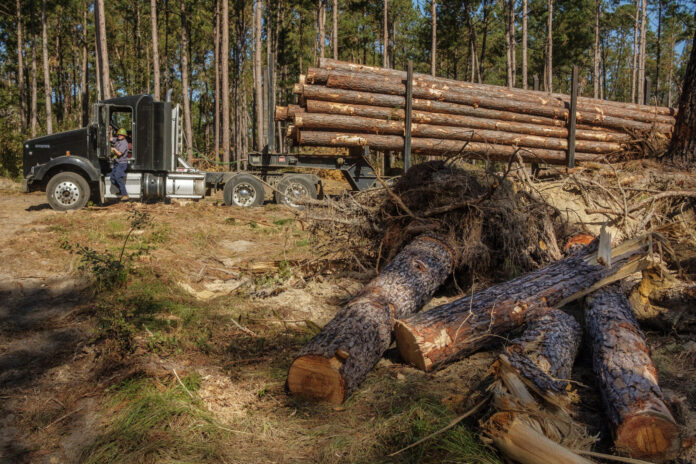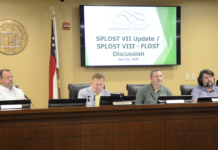
(States Newsroom) — It’s been just over a year since Hurricane Helene ripped across the Southeast, killing 250 people and causing billions of dollars in damage to homes and businesses.
In Georgia, the storm claimed 37 lives while its devastating winds and floodwaters led to at least $5.5 billion in damage to the state’s farmers and foresters, according to assessments from University of Georgia researchers.
On Tuesday, the U.S. Department of Agriculture announced the state will receive just over $531 million in federal funds for the Hurricane Helene Block Grant Program intended to cover future economic losses, infrastructure losses and timber losses caused by the hurricane.
In a statement, Georgia Agriculture Secretary Tyler Harper celebrated the funding, stressing that it was the most the state could get.
“This funding is absolutely essential to help our farm families bounce back from Hurricane Helene, and our team invested hundreds of hours into the negotiation process to secure the maximum possible amount of federal funding for our state and our producers,” Harper said.

According to the USDA, the money will come from a $30 billion disaster assistance relief effort set aside in the American Relief Act of 2025, signed late last year by former President Joe Biden. Under that program, USDA worked with Georgia and 13 other states to develop individual grants.
Administrative details including how to apply for funding have not yet been released but will be forthcoming, the USDA said in a release.
In a statement, U.S. Agriculture Secretary Brooke Rollins touted other federal disaster assistance programs targeting farmers.
“The Trump Administration has our farmers’ backs and will ensure they have the resources they need to continue to produce the safest, most reliable, and most abundant food supply in the world,” she said.
As of last week, Georgia farmers affected by Helene have received more than $503 million from the USDA’s main disaster relief programs, according to the Georgia Department of Agriculture, with the block grants bringing the total to over $1 billion. That number could grow as the USDA disburses more money. The state has also pitched in for the relief effort, including by offering more than $300 million in emergency loans and grants.
Hard times
Agriculture groups welcomed the relief, though some stressed it comes as farmers and foresters are dealing with an especially tough economy beyond storm damage.
Cotton farmers, for example, are also dealing with new insects like the two-spot cotton leafhopper and competition from an uptick in cheap, low-quality synthetic fabrics worldwide.

Georgia’s cotton industry represents more than $1.3 billion in revenue for Georgia farmers, making it one of the state’s top crops, and it was one of the crops hit hardest by Helene. The storm caused significant damage to the state’s cotton fields last year, with UGA scientists projecting a loss of 500,000 to 600,000 bales of cotton, just under a third of the entire crop.
“We’re in a situation where we have remarkably low prices,” said Taylor Sills, executive director of the Georgia Cotton Commission. “We’re facing new insects, which is adding cost to producers in a time of low to negative return in the first place. But any assistance to support Georgia’s cotton industry is welcome news at the end of the day.”
Sills added that the response to Helene was quicker than those following previous storms.
“When you compare it to the aftermath of Hurricane Michael in 2018, it was a year and a half before Congress had even passed assistance in the wake of that storm, and here we are a year later, and all of these things have been not only passed through Congress, but been implemented,” he said. “So even though we’re in a bad situation as an industry, this assistance has come to people quicker than then.”
When Helene crossed Georgia, it blew through more than 8.9 million acres of forestland, causing an economic impact of $1.28 billion in the state, according to the UGA assessment.
Tree farmers report a tough economy, including rising costs, labor difficulties and weak markets. Since the storm, International Paper has closed mills in Savannah and Riceboro, dropping pulpwood prices further and making life more difficult for many tree farmers.
In an email alert to members Tuesday, the Georgia Forestry Association touted the latest block grants as a “significant opportunity to provide support to Georgia’s forest landowners who were devastated by this storm,” but were also pragmatic about the situation facing many members.
“Georgia’s forestry and farming families have endured one of the most challenging years in memory. Hurricane Helene left a path of devastation across our state, damaging fields, forests, and the livelihoods that depend on them. For many, the storm struck on top of already difficult conditions — high input costs, rising interest rates, supply chain disruptions, and weakened markets — making recovery even more daunting.”






